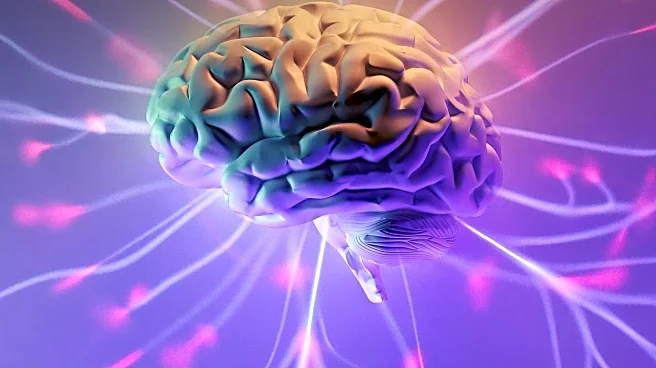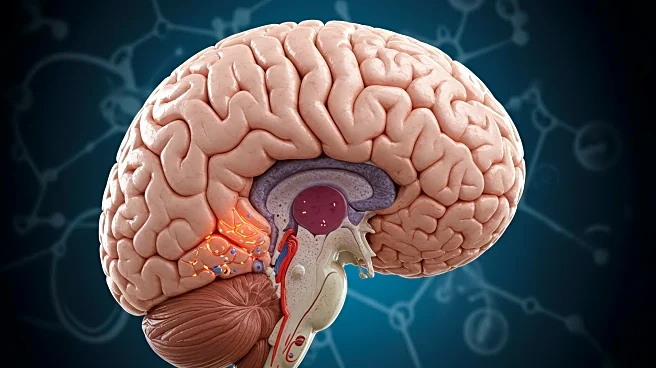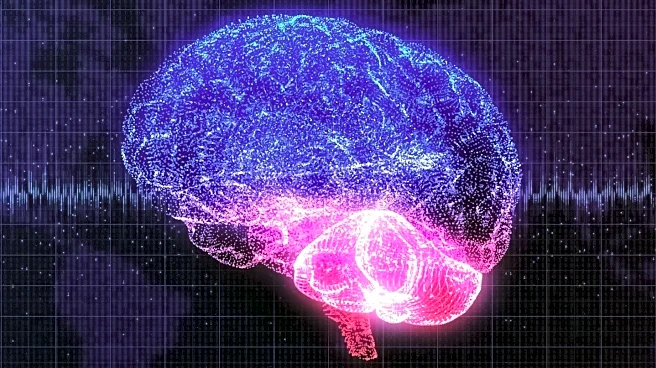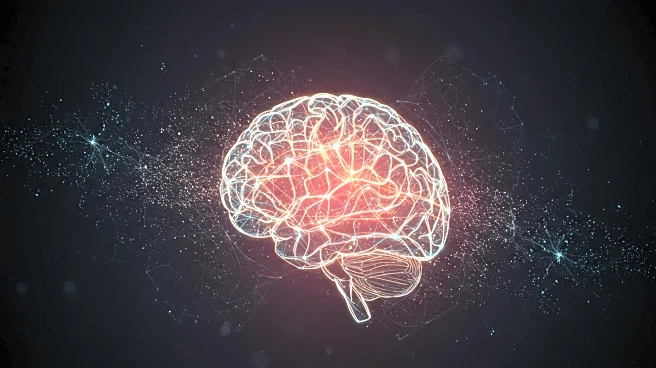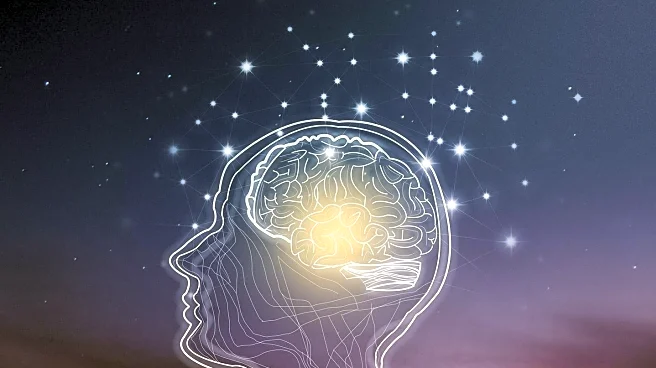What's Happening?
Recent research has focused on the dynamic functional connectivity in Parkinson's disease (PD) patients, particularly those experiencing hyposmia, a reduced sense of smell. The study utilized resting-state functional MRI data to analyze brain state transitions and connectivity patterns among PD patients with hyposmia (PD-SH), PD patients without hyposmia (PD-CN), and healthy controls (HC). The findings revealed significant alterations in brain state transitions, particularly between brain states C and F, in PD-SH patients compared to PD-CN patients. These transitions were notably lower in PD-SH patients, indicating distinct connectivity disruptions. The study employed advanced imaging techniques and statistical analyses to assess the spatiotemporal dynamics of brain connectivity, aiming to identify potential biomarkers for PD-related hyposmia.
Why It's Important?
Understanding altered brain connectivity in PD patients with hyposmia is crucial for developing targeted interventions and improving diagnostic accuracy. Hyposmia is a common non-motor symptom of Parkinson's disease, often preceding motor symptoms and serving as an early indicator of the disease. By identifying specific brain state transitions and connectivity patterns associated with hyposmia, researchers can enhance the understanding of PD's pathophysiology and potentially develop new therapeutic strategies. This research contributes to the broader effort to identify reliable biomarkers for Parkinson's disease, which could lead to earlier diagnosis and more personalized treatment approaches, ultimately improving patient outcomes.
What's Next?
The study's findings suggest further exploration into the use of dynamic functional connectivity as a biomarker for Parkinson's disease, particularly in patients with hyposmia. Future research may focus on validating these findings in larger cohorts and investigating the underlying mechanisms driving altered brain connectivity. Additionally, the development of non-invasive imaging techniques and machine learning models could enhance the ability to predict disease progression and response to treatment. Collaboration between neuroscientists, clinicians, and technology experts will be essential to translate these findings into practical applications in clinical settings.
Beyond the Headlines
The implications of this research extend beyond Parkinson's disease, offering insights into the broader field of neurodegenerative disorders. The methodology used to assess brain connectivity could be applied to other conditions characterized by altered neural dynamics, such as Alzheimer's disease and multiple sclerosis. Furthermore, the study highlights the importance of considering non-motor symptoms in the diagnosis and management of neurodegenerative diseases, emphasizing a holistic approach to patient care.
